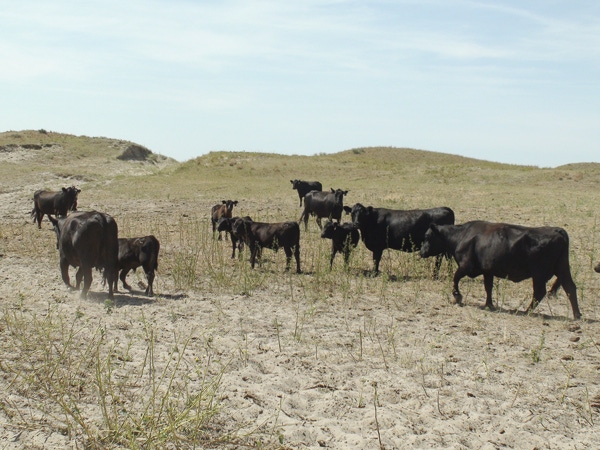Drought duration: You have more control than you think
Dealing with drought can not only save the ranch, it can preserve your sanity.
July 9, 2020

Drought conditions are sweeping across much of the western states, with precipitation levels in many areas significantly lower than historical averages. Rain events will obviously dictate when a drought will occur. However, the severity and recovery from a drought can be controlled and influenced by management decisions to a large degree, says Roy Roath, professor emeritus at Colorado State University and rangeland consultant.
Available feed
“Praying for rain is not a drought management strategy,” Roath emphasized during a Zoom call on drought management hosted by the New Mexico Coalition to Enhance Working Lands. He urged ranchers to assess their ranch as soon as possible and take account of grass availability, grass quality and stream flows.
Understanding the quality and quantity of feed available in your local area and home ranch is crucial, Roath says. The effective stocking rate on the ranch will vary greatly depending on feed availability and quality. “Cows don’t eat acres, they eat forage. Talking about stocking rates to the acre in a drought can lead you into trouble if a large portion of your acres has no feed,” Roath says.
Once a rancher has assessed the forage availability, they can then decide on whether to supplement or feed out cows to reduce grazing demand on the stressed grasses. Roath suggests that supplement feeding with protein blocks can attract cattle down into canyons or hard to reach places to access more grass.
He defines supplement feeding as adding nutrients (protein) in a situation where there is enough feed available. Alternatively, feeding out cattle with hay brings entirely different management decisions.
“Apart from the cost of hauling and buying hay, I often find that feeding-out areas become permanently damaged by the high traffic and never recover when rains come,” Roath says.
Allocations
Prioritizing quality feed to different classes of stock is also highly recommended during a drought. “Heifers and young stock don’t handle drought as well as good, strong mature cows,” Roath says.
If retaining ownership is important to a producer, Roath suggests moving good stock to a different state if necessary for grazing. “Pull the plug and cull/sell stock if you need to. The most important thing in a drought is to preserve your mental sanity. I’ve had friends that sold over half their herd during a severe drought, and their ranch and sanity survived thanks to making that decision,” Roath says.
Catch the rain
Water management is also a key factor in the drought duration a ranch will experience. “Scattered rains can come, even during a drought, so we need the plants and soil to be ready to hold as much water as possible,” Roath says.
Overgrazing rangeland and riparian areas will cause water to leave the ranch too quickly when it arrives, as the root structure of the plants have been damaged by overgrazing. Roath explained that a healthy grass plant with full leaf can have a large root structure, often the size of a 30-gallon bucket. However, the same plant, if it is overgrazed in a drought, can have its roots contract to the size of a teacup.
“We need patience before we rush back in to graze when the rains do come. The plant needs to grow leaves first, before it will replenish its root structure,” Roath says. Overgrazing can lead to soil erosion during flash flooding events and will exacerbate a drought for longer than necessary.
Patience and being conservative are high priorities for Roath’s drought management strategies. “It’s a marathon, not a sprint. An understocked ranch has never gone out of business but I’ve seen plenty of overstocked ranches hit the wall,” Roath says. Assessing the current situation, making a plan and being decisive are difficult but necessary steps to overcoming a drought and limiting its impact on the ranch and its people.
Cox is a dairy producer and freelance beef/dairy writer based in Missouri. The opinions of the author are not necessarily those of beefmagazine.com or Farm Progress.
You May Also Like


.png?width=300&auto=webp&quality=80&disable=upscale)
